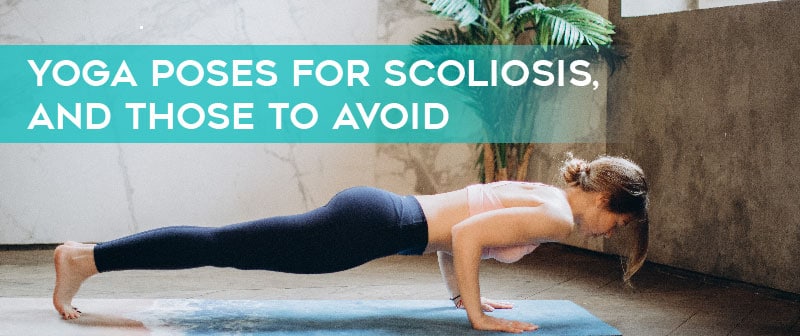
As an avid yoga enthusiast and an alternative scoliosis doctor, I’m often asked about the best yoga poses for scoliosis and yoga poses to avoid with scoliosis. When yoga for scoliosis is performed properly, each posture can yield significant benefits.
For many years, yoga has been used as a form of meditation and relaxation, and it has been shown to be beneficial when it comes to pain. Many yoginis who deal with scoliosis-related pain practice yoga as a method of pain management.
Many people ask me whether or not yoga can stop the progression of scoliosis or lessen the curvature. In order for yoga to have a positive impact on the scoliosis curvature, it must be used in combination with other forms of alternative treatment, such as the CLEAR approach.
This article will discuss how using yoga poses for scoliosis in combination with alternative forms of treatment can have a positive impact on the spine. The poses discussed throughout this article should be used under the instruction of an experienced yoga for scoliosis instructor.
In a previous article, Yoga for Scoliosis in Adults, I discuss the importance of understanding the biomechanics of your spine and your unique scoliosis pattern before jumping into yoga poses for scoliosis. Please read Yoga for Scoliosis in Adults before jumping into the rest of this article.
Scoliosis is a complex three-dimensional deformity of the trunk and spine. It involves abnormal lateral curvature and rotation of the spine. It can be present in different regions of the cervical, thoracic, and lumbar spine or in a combination of these regions.
Before beginning to practice scoliosis yoga, it is important to understand your unique scoliosis pattern. As I have never seen two cases of scoliosis that are alike, your pattern is truly unique to you.
There is a vast difference in the spine of adults with scoliosis and adolescents with scoliosis. That difference is growth. While adolescents are still growing, adults are not, and this makes a big difference in the risk of scoliosis progression in their spine. This article will focus on yoga poses for adult scoliosis, specifically adult scoliosis that developed in adolescents and adult degenerative scoliosis.
In addition to understanding your scoliosis pattern, you must be aware of areas of weakness in your spine. Areas of weakness include loss of normal curvature (discussed in a previous article), torsion (twisting) in the discs, areas of degeneration, and sacroiliac instability.
Yoga poses to avoid with scoliosis, especially a loss of cervical lordosis, are covered in Yoga for Scoliosis in Adults. This article will discuss torsion in the discs and areas of degeneration when it comes to yoga poses to avoid with scoliosis. We’ll also talk about poses that are beneficial for patients with scoliosis.
As mentioned earlier, scoliosis involves a curvature of the spine along with rotation. When the rotation is greater than 20 degrees an individual will have torsion or twisting in the discs of their spine. This twisting of the spine is similar to wringing out a towel, it will twist and then buckle into a curvature. The twisting is different from the Cobb angle which only measures the size of the curvature but not the amount of twisting.
Cobb angle - the standard by which the severity of a scoliosis is measured. Cobb angle involves identifying the two most tilted vertebrae in a curve. A line is drawn along the top of the most-tilted bone at the top of the curve, and the bottom of the most-tilted bone at the bottom of the curve. Perpendicular lines are then drawn from these lines, and the intersection of the perpendicular lines is measured and expressed in degrees
In my experience, I have found that when patients have a Cobb angle above 30 degrees, 20 degrees of twisting is very common. This means, if your Cobb angle is above 30 degrees, it is very likely that you have torsion or twisting in the discs of your spine. 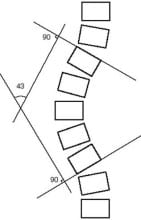
Because of the effects gravity and the weight of the torso stressing the lower back, torsion and twisting is most problematic in this area off the spine.
Adults with scoliosis are more likely to experience pain than adolescents with scoliosis. This is true because their spine is less flexible, and spinal compression is more common when growth halts with age. The lower back is a common area of pain for adults with scoliosis. This is often due to the torsion and twisting in the discs of the lumbar spine.
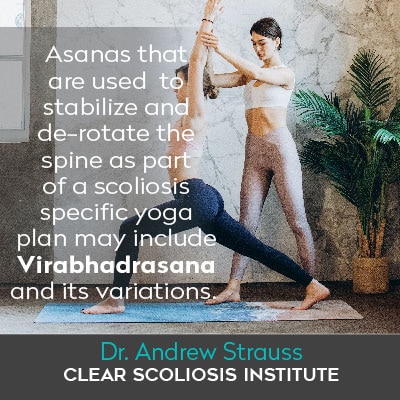
One of the biggest benefits of practicing yoga is that it can strengthen the core which helps stabilize areas of torsion and can be used to de-rotate the spine thus preventing recurrent pain.
An experienced yoga for scoliosis instructor can help you develop a unique program to target your areas of torsion and twisting. Poses designed to target your areas of torsion should only be done under the guidance and direction of a yoga for scoliosis instructor. When done improperly, poses can cause further damage or injury. This can actually aggravate the twist and trigger pain - no one wants that to happen!
In yoga, a pose is often referred to as an asana. Asanas that are used to stabilize and de-rotate the spine as part of a scoliosis specific yoga plan may include….
Virabhadrasana and variations (with typical Left lumbar curves extend the right leg to derotate the lumbar spine). Be careful using these curves with a scoliosis, as the wrong application can aggravate your scoliosis pain.
Adho Muka Svanasana can be very useful when emphasizing a lengthening of the lumbar spine.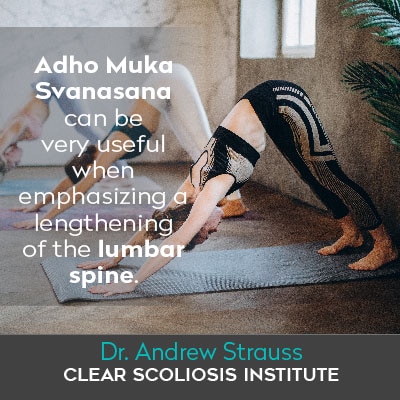
Degeneration in the spine is commonly known as arthritis and can also be a direct cause of spinal stenosis. According to Mayo Clinic, “Spinal stenosis is a narrowing of the spaces within your spine, which can put pressure on the nerves that travel through the spine. Spinal stenosis occurs most often in the lower back and the neck.” [1]
While stenosis can be something you are born with (narrow openings where the nerves to emit from the spine), spinal stenosis is typically caused by a combination of bulging or herniated discs and the narrowing of the nerve channels due to degenerative changes.
With scoliosis, the ligaments and muscles of both sides of the spine are shortened, but more so on the inside of the curve. This is a protective mechanism of the body to prevent the curve from getting bigger. In fact, many people who have a “compensated double major scoliosis” will see very slow progression as they age.
Typical progression rates for adults with scoliosis are as slow as 0.4 degrees per year. This is much slower progression than adolescents because adults are no longer growing. Progression rates vary tremendously in adults depending on the location, shape, and size of the curve along with the amount of degeneration present and how deviated the posture is.
Overstretching muscles and ligaments can lead to a more rapid progression rate in adult scoliosis. Because of this, it is extremely important to avoid overstretching that can happen while practicing yoga.
Hot yoga is the practice of yoga in intense heat. This form of yoga can easily lead to overstretching if not practiced very carefully. It is important to note that even traditional yoga carries the risk of overstretching.
According to Yoga Journal, “If you overstretch your muscles and ‘wring them out’ of all their fluids, you reduce their ability to heal and may even damage them in the process.” [2]
This is one of the many reasons why yoga for scoliosis should only be performed under the direction of a highly trained professional - especially if you have areas of degeneration in your spine.
Asanas to use with caution are Paschimottanasana – seated forward bend and stretching of the sciatic nerves - and Ardha Navasana, Purvottanasana, Urdhva Prasarita Padasana, Chaturangasana, and other core strengthening poses.
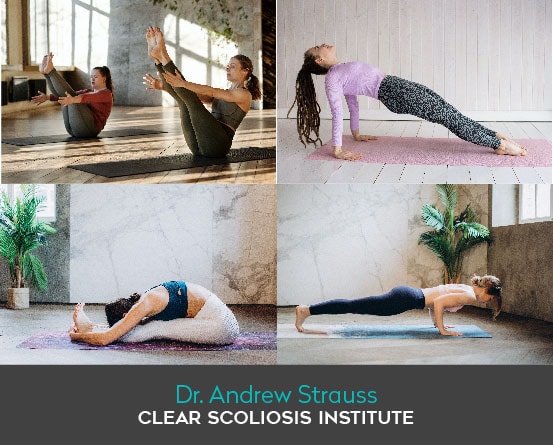
I’ve mentioned in previous articles and at the beginning of this article that yoga poses for scoliosis must be used in combination with another form of alternative treatment to have a positive impact (curve reduction) on someone’s scoliosis.
Yoga for scoliosis is extremely effective when the practitioner respects the inherent limits of an individual’s unique spine. Doctors who are certified by CLEAR Scoliosis Institute, a nonprofit organization that educates professionals in alternative scoliosis treatment, are specifically taught to know and understand the limits of a scoliotic spine.
The main goal of practicing yoga for scoliosis is to improve mobility, relieve pain, and stabilize the spine by strengthening the core. The main goal of the CLEAR approach is to improve a patient’s scoliosis curvature without surgery. In a 2015 study, over 95% of patients using the CLEAR approach reported positive results. [3]
Using yoga for scoliosis along with the CLEAR approach can deliver even better results.
The practice of yoga is one that has withstood the test of time. It has provided rest, relaxation, spiritual connection, and pain management (to name a few) for millions of people worldwide.
Scoliosis is a complex, confusing condition of the spine. Many individuals with scoliosis look to the practice of yoga for relief and help.
Not all yoga instructors are trained in yoga for scoliosis, just like not all doctors are trained to treat scoliosis. When it comes to your scoliosis, it is very important to seek the help and advice of a highly qualified professional with a depth of experience dealing with the scoliotic spine.
When yoga for scoliosis is performed properly and combined with the appropriate type of alternative treatment, the benefits for the patient are outstanding. Alternative treatment like the CLEAR approach provided by a highly trained professional will help your practice of yoga for scoliosis yield the greatest results.
[1] Spinal stenosis, Mayo Clinic
[2] Soreness After Yoga: How to Ease Your Discomfort
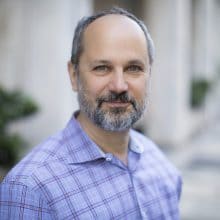
CLEAR provides a unique and innovative way of understanding scoliosis. Sign up to receive facts and information you won’t find anywhere else.
